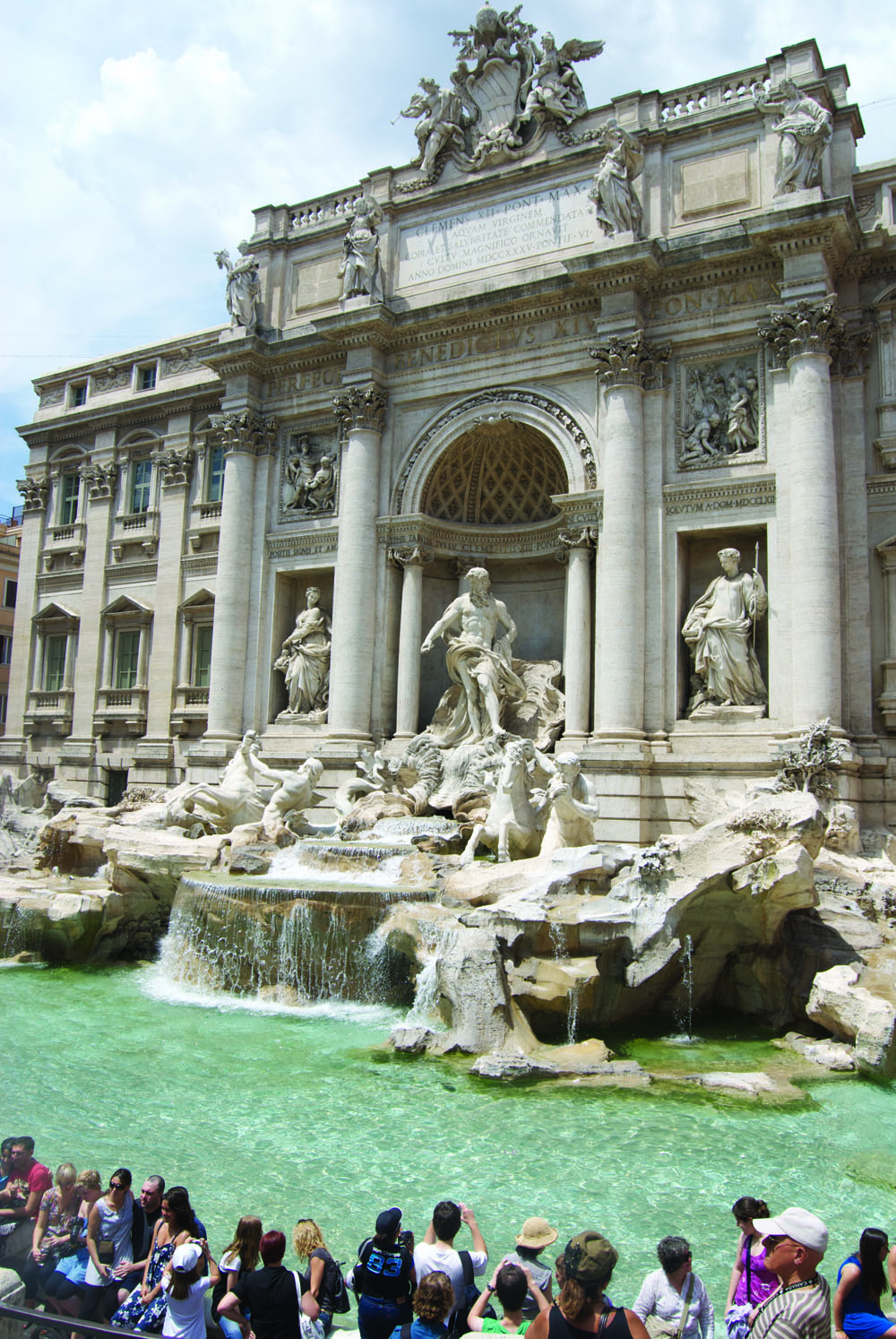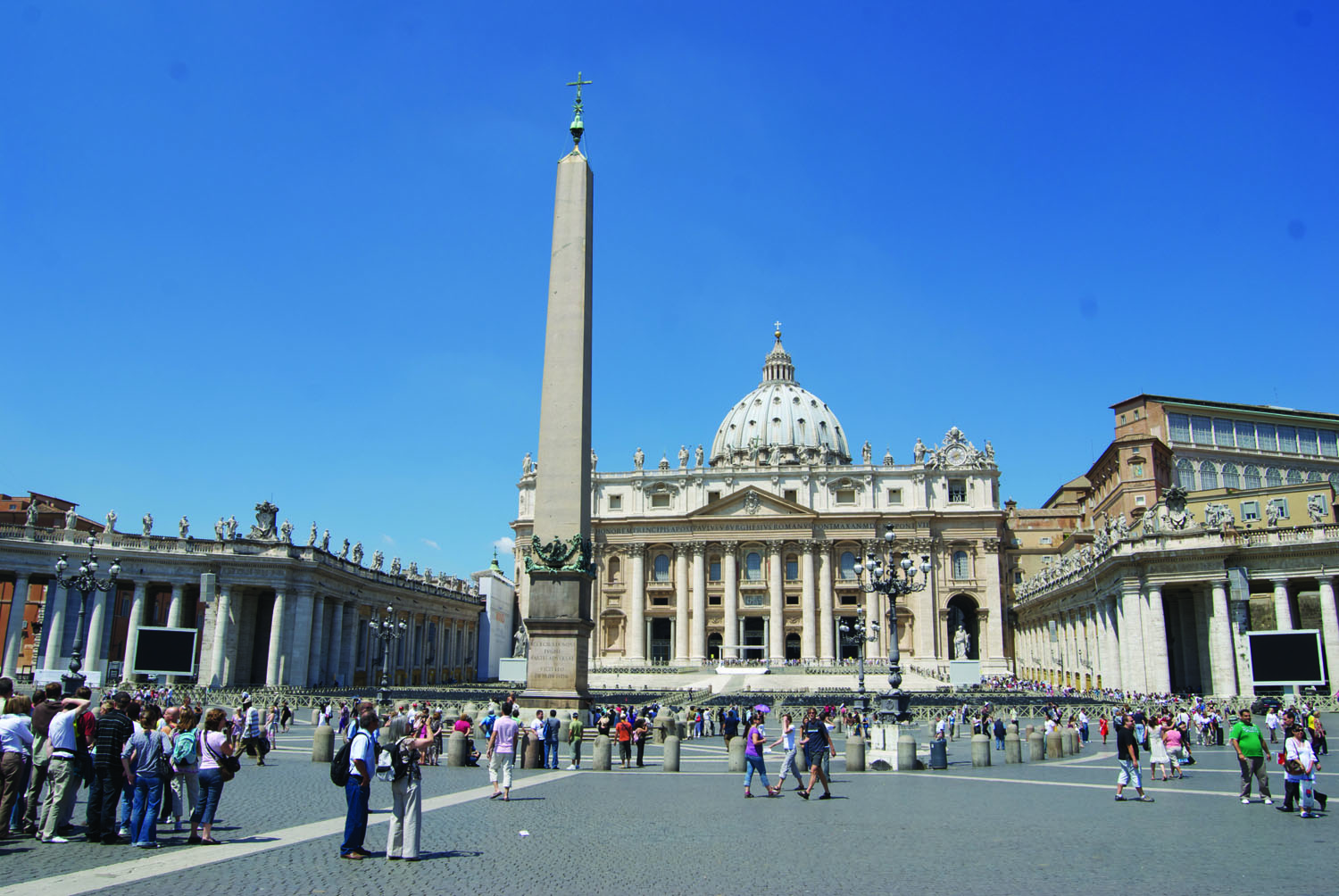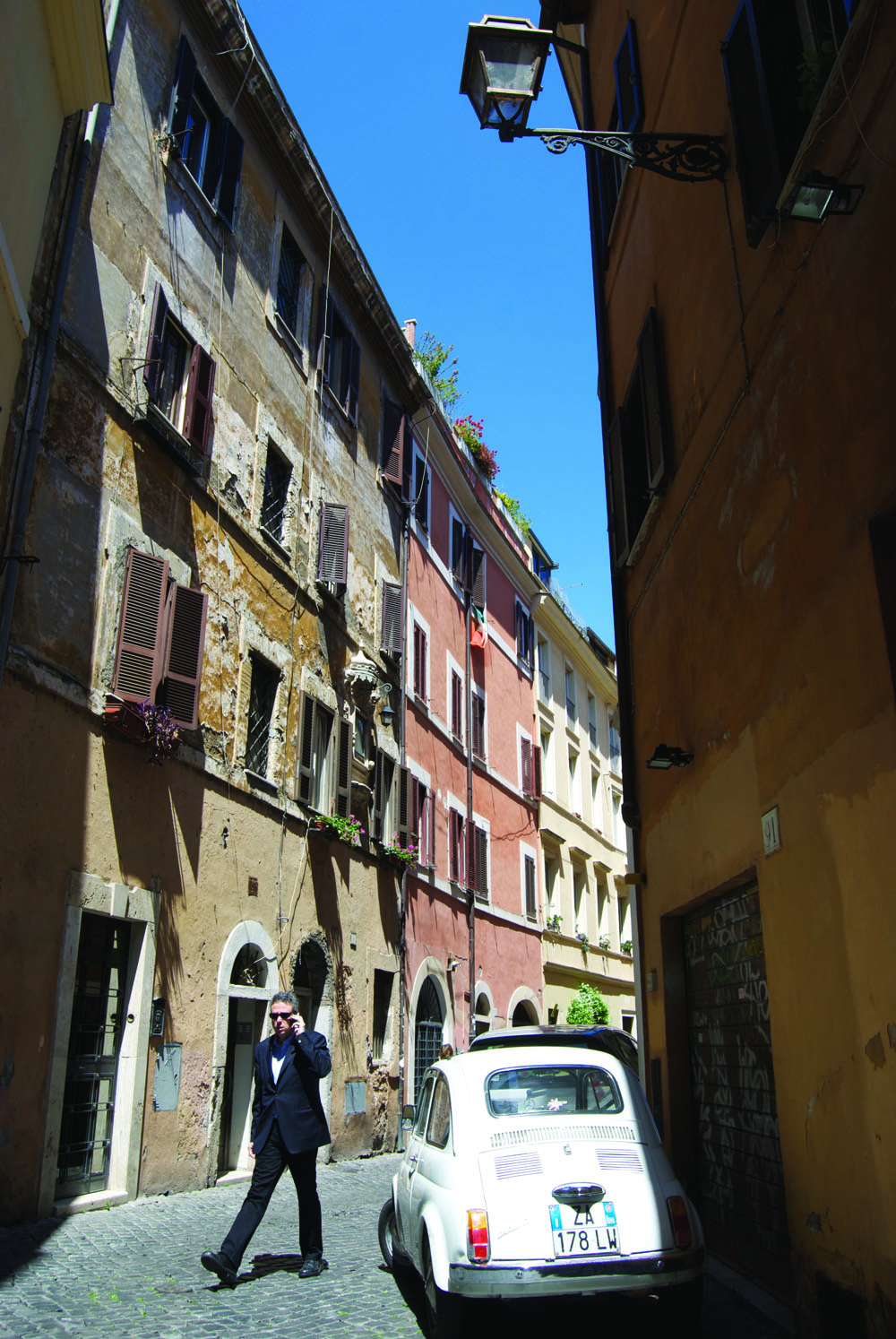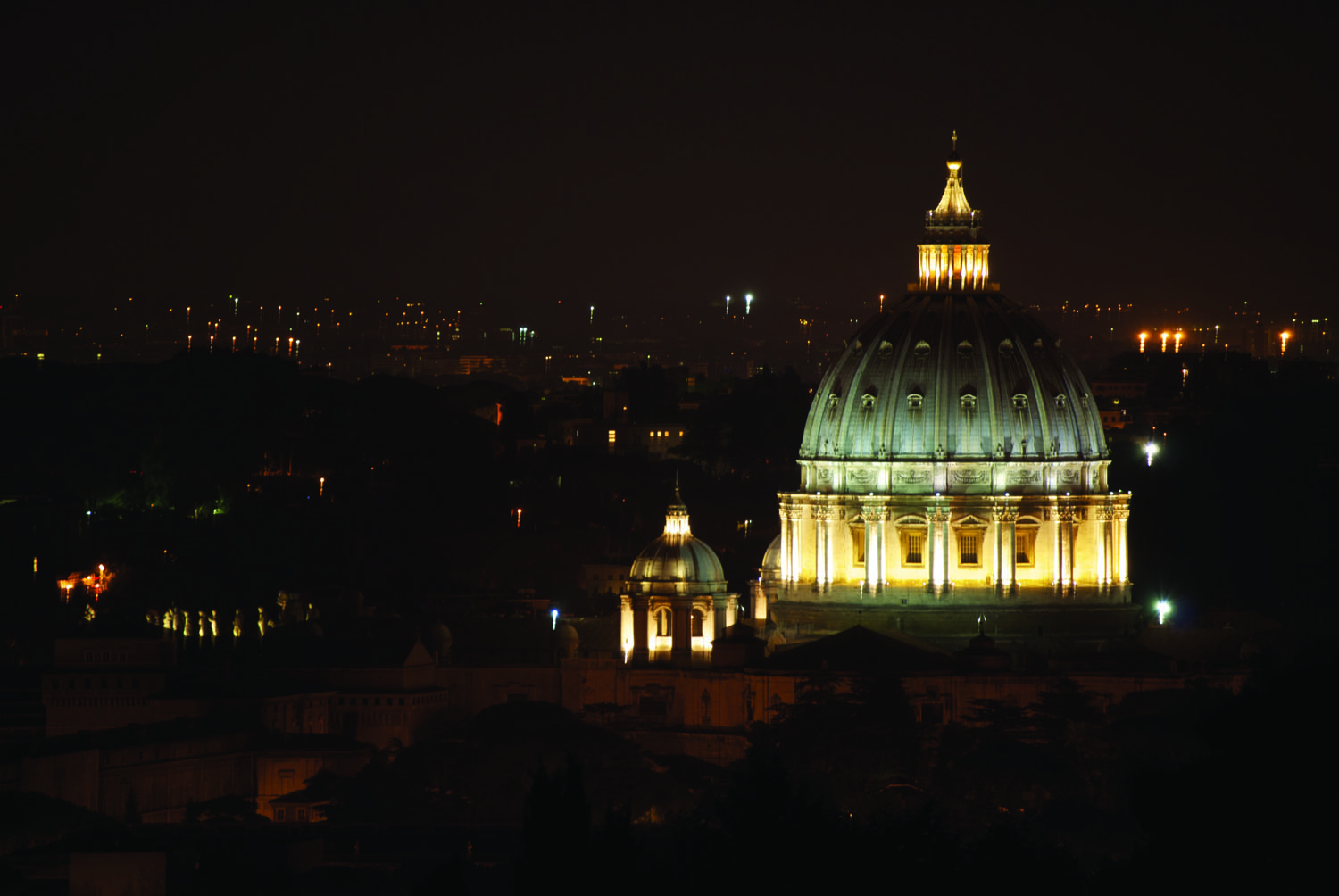James Miller and his wife take the children to Rome for some extra-curricular education and discover a real family-bonding experience, and the fact that there is a great pizza parlour right in front of the Pantheon…

As a family we’re quite lucky, courtesy of the children’s television programme Horrible Histories. Our two youngsters, at age nine and six, are fascinated with the intrigue and excitement of ancient history. There are many places in the UK where children can learn about Ancient Rome, including their own school syllabus, however we’ve always told them that there’s nothing like the real place, where you can literally see the sites and touch the history yourself. And as we approached the Colosseum our nine-year-old daughter and six-year-old son’s expressions said it all. Their imaginations were firing with scenes of gladiatorial combat and emperors determining the fate of combatants through a simple gesture of thumbs up or down.
Despite the queues, the children’s enthusiasm wasn’t dampened at all and when they entered the Colosseum they couldn’t believe the epic scale of the arena. Our son was particularly intrigued to know where it was that the lions ate the Christians. It was at this stage we wondered if a parental guidance certificate should be applied to the morning’s history lesson.
 We swiftly moved on to less gory facts about the monument’s past, explaining how the Colosseum was built upon the site of the eccentric Emperor Nero’s lake, and how this amphitheatre set the precedent for countless others across the Empire – some of which our children had seen in Britain. Starting at the Colosseum was a great way to begin the trip as the children were desperate to see more of what the city had to offer.
We swiftly moved on to less gory facts about the monument’s past, explaining how the Colosseum was built upon the site of the eccentric Emperor Nero’s lake, and how this amphitheatre set the precedent for countless others across the Empire – some of which our children had seen in Britain. Starting at the Colosseum was a great way to begin the trip as the children were desperate to see more of what the city had to offer.
Our daughter convinced us that a key part of the Roman cultural experience was finding a genuine Roman gelateria. Luckily, I knew just the place, the renowned Tre Scalini in the Piazza Navona. While the children enjoyed their fragola (strawberry) ice-creams and were as revved up as two turbo-charged Vespas, my wife and I thought we had better replenish our caffeine and sugar levels to ensure that we were all on a level playing field. We had one of the café’s famous chocolate tartufos. And of course this was in no way over-indulgent as we were actually experiencing history. We convinced ourselves of this when we discovered that the Tre Scalini actually created the recipe in 1946.
Outside the café, my wife was drawn to the baroque beauty of one of the three fountains of Piazza Navona, the fountain of the four rivers. She stood mesmerised for quite some time. The four nudes of the fountain represent major rivers across the world and, like many of the sculptures adorning the eternal city, this work is attributed to the genius of Bernini. Bernini’s true mastery lay in his ability to immortalise the majesty of the human form in motion. The majesty of Rome’s art gives the city an almost dream-like quality and fortunately for those day-dreaming of baroque, Bernini’s legacy is everywhere for all to enjoy.
Next we went to the gardens of the Villa Borghese, where my wife and I could stroll through the outdoor space and enjoy the classical architecture dotted around the park.
We spent some time in the Villa Borghese itself enjoying the Renaissance artwork. The combination of lush green open space, water features and beautiful sights was a thoroughly uplifting experience and an opportunity for the children to burn off some energy, before dinner and bedtime.

That evening we had our dinner in the restaurant roof garden of the hotel forum. The children were chatting about the events of the day. They were particularly competitive in determining who was the maddest emperor, Nero or Caligula. The restaurant provided the perfect ambience for our meal and gazing out to the illuminated forum over a glass of wine was a perfect end to the day.
After enjoying a night of well-earned sleep, we were up and raring to tread the ancient streets of the Eternal City again. The first destination was the Vatican Museum to show the children something that my wife and I had seen many times before that never fails to give us an unforgettable sense of awe, the Sistine Chapel.
After navigating through the many corridors and chambers of the Vatican Museum, we arrived at the chapel itself. Worryingly, the custodians of the chapel, who were stood at an elevated position from the crowds, seemed to be exercising strict crowd control, with an authoritative ‘Ssshhhh!’ every time the tourists’ murmurings became too loud. We explained to the children that if they didn’t want to get an emperor’s thumbs down, they need to speak a little more quietly. We told the children that they had to treat this place as a spot to rest in to get the full benefit from it. Many people make the mistake of simply walking in, thinking ‘sight done’ and walking out. If you stay here for a while and really make the effort to absorb the works of Michelangelo and his depiction of the last judgement, it really can be quite an intense and moving experience.
Some schools of thought assess that the range of emotions expressed in the painting reflect the pain,  anguish and conflict felt by the painter himself. Although this conversation was between my wife and I, as we thought it would be a little deep for our six-year-old, who was busy craning his neck in wonderment at all the brightly-coloured figures that had been so attentively painted some 473 years ago.
anguish and conflict felt by the painter himself. Although this conversation was between my wife and I, as we thought it would be a little deep for our six-year-old, who was busy craning his neck in wonderment at all the brightly-coloured figures that had been so attentively painted some 473 years ago.
Our next stop was the Castel Sant’Angelo. Our children were determined to meet the challenge of getting to the top to see the views across Rome. The castle once served as a tomb for the Emperor Hadrian and was later used as a papal fortress. When we arrived at the top the views were utterly breath-taking. The Tiber sweeps through the city and the skyline is dotted with terracotta rooftops, lush treelines and turquoise basilicas. My wife remarked that we had satisfied our culture vulture appetites for art, beauty and meaning and now it was time for some well-earned indulgence through shallow material satisfaction. We shortly arrived at the designer shops near the Spanish Steps. At the sight of the sleek Italian shoes, my wife had an expression comparable only to my son’s when gawping at the angels and demons painted on the frescoes of the Sistine Chapel. Rome does indeed cater for all tastes and things of beauty don’t always have to be more than 300 hundred years old.
Once the Italian retail therapy had been administered we decided to have a quick espresso in the historic Caffè Greco. This café has been frequented by the great and the good of Europe’s history, from famous composers such as Wagner to lothario bounders such as Casanova. It was like being transported to the bygone era of 18th century Rome. Walls bedecked in gilded mirrors and paintings. The staff were impeccably dressed and if it wasn’t for the thunderous roar of an Italian sports car outside we could have been in 1760, the year of the café’s founding. The coffee was strong enough to propel us on to our next destination with the enthusiasm and energy of a prancing and horse.
After the children had finished playing around the baroque fountain at the bottom of the Spanish Steps, they were bounding up the steps to the very top. We all took a seat on one of the steps and soaked up the atmosphere of our location. The steps were full of people, families enjoying their holidays and young couples seeking a romantic spot surrounded by bougainvillea. This is one of the many historic and public locations of Rome that is so beautiful it just evokes good vibes from everyone there. We stayed at the Spanish Steps to savour this precious family time in such a special location, watching the world go by beneath us.

The evening was drawing in and we had all worked up an appetite fit for a Roman legionnaire. We decided to eat in the piazza in front of the Pantheon. The food was delicious and we enjoyed typical Roman pasta dishes. The children were thrilled to be eating in front of a real Ancient Roman temple and my wife and I were thoroughly enjoying the ambience the floodlit Pantheon created. This meal marked the end of our trip and we felt as though we had developed our children’s fascination with the history of the Caesars and their treasure trove of art and culture. Although more importantly, our trip to the Eternal City had ensured that we made some unforgettable and epic family history of our own that we will all treasure forever.
Photography © James Miller
